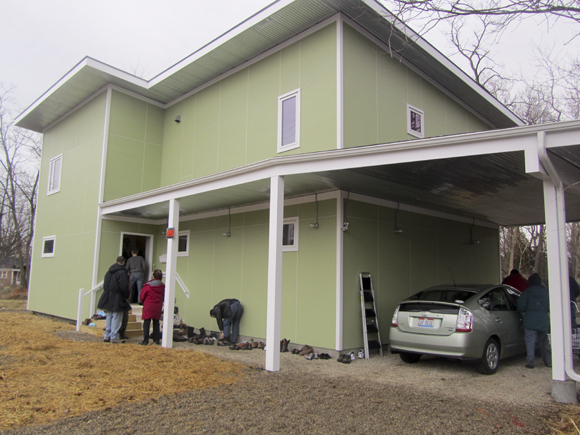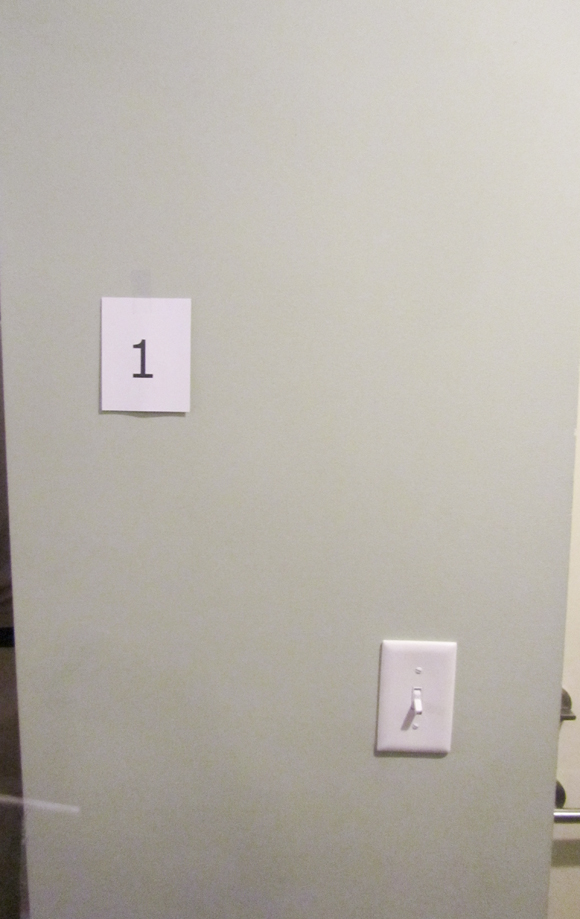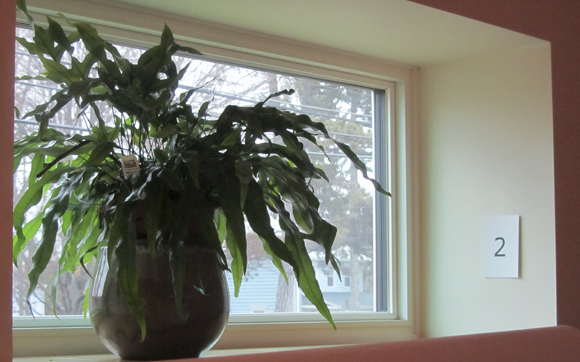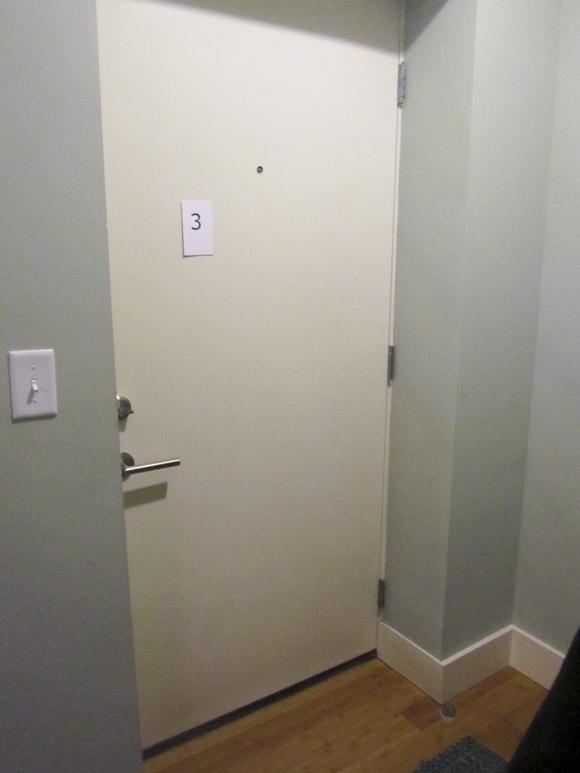In February we were invited to the Passive House in Yellow Springs, Ohio’s open house. Hosted by both the new owners and the building company, the event was a casual, yet incredibly informative adventure.

The people at Green Generation Building have been generous enough to share the walking tour here at Charles & Hudson, so without further ado, welcome to Ohio’s First Passive House. We hope you find some ideas, technology and appliances that you can incorporate into your own home.
1. Passive House is one of the most efficient in Ohio. It is projected to use 90% less than energy to heat and cool per year than an average house.

Passive House is literally shaping the future. This house is not shaped like its neighbors because it is designed to perform like almost no other in Ohio. The complex set of systems that compose this house has been finely tuned to use 90% less energy than an average house. Each element has received special attention to save energy. Starting with the shape, it minimizes how much heat will leak through the walls by having less wall to leak, also known as a low surface area to volume ratio. It is equivalent to hugging your knees rather than stretching out. Which one keeps you warmer?
2. The walls are 15 inches thick made mostly of styrofoam like a lunch cooler.

Extra-thick walls combined with the efficient shape are the primary features that make this a Passive House. These walls are about 15 inches thick and made mostly of extra dense polystyrene (R-58) which makes the house essentially a giant lunch cooler. Similarly, they are nearly airtight which is key to their efficiency. The walls arrived in 4 foot wide sections known as Structural Insulated Panels (SIPs) that were placed on end next to each other around the foundation until the walls were compete windows an all. The whole process took half the time it would have to build more traditional walls.
3. Doors are insulated like a Thermos bottle.

Very special doors make normal, insulated doors look like cardboard. These doors are full of something special: nothing. These doors are filled with Vacuum Insulated Panels (VIPs) that act like a Thermos bottle to create exceptional insulation value, about R-40. That is better insulation than most homes have in their roofs.
4. Super-insulated Windows

Extra-thin windows? Yes, these windows are thin considering they have the equivalent insulation value of thicker, 4-pane widows or many older walls. You may noticed that the windows on the north (street) side are small because those windows will only lose heat, but the southern windows are large to collect the sun throughout the winter helping this house stay warm without a furnace.
5. Appliances were all chosen to be very efficient.

Efficient kitchen appliances are each individually chosen to use less energy — most notably, the stove. This induction cook top uses a magnetic field to heat only the pot that the food is in. This stove is more efficient and boils water faster than a gas range without the fumes from combustion.
6. “Mini-Split” unit is very efficient for heating and cooling.

Pumping heat, this “mini-split” unit is an air conditioner and a heater. This piece of equipment uses gases and pressure to transfer heat from one side of the wall to the other saving energy by moving heat, not using energy to generate it. Even down to 5 degrees outside, there is enough heat to concentrate and pump inside to warm the house.
7. A heat-pump water heater.

Water heating is one of the biggest energy costs of any home. This water heater concentrates heat from the air to the water, and it helps cool the house in the summer.
8. Washing machine and condensing dryer.

The dryer (another typical energy hog of a home) condenses the water vapor out of the clothes thereby not wasting energy by blowing hot air outside the home.
9. Energy Recovery Ventilator

Exhausting equipment can be equated to the lungs of a house. This ERV (Energy Recovery Ventilator) draws stale air form the kitchen and baths and supplies fresh air to the living spaces while simultaneously separating and saving 96% of the heat. This is very important for energy conservation and makes for a very healthy and fresh indoor environment.
10. Water saving plumbing fixtures

Saving water is very important in a Passive House because water needs to be heated and that takes energy. Less water requires less energy, simple as that.
11. Two-foot thick roof filled with insulation

About two feet of high-density fiberglass makes this roof three times more insulated than code requires, helping to keep heat in as much as possible.
Stay tuned as we discuss the more decorative side of Passive House!


No Comments